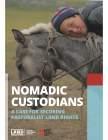Land Library
Bienvenue dans la bibliothèque du Land Portal. Explorez notre vaste collection de ressources en libre accès (plus de 74 000), comprenant des rapports, des articles scientifiques, des articles de recherche, des publications évaluées par des pairs, des documents juridiques, des vidéos et bien plus encore.
/ library resources
Showing items 10 through 18 of 53.This article addresses political rights and identity among Il Chamus of Baringo District, Kenya, a small group of agro-pastoralists related to the Maasai.
The technical guide on improving the governance of pastoral lands is designed for several audiences including government and non-government actors.
The first phase of the “Water for Livestock in Isiolo and Garissa Counties, Kenya — Enhancing water resource and rangeland management community capacity through training and strategic water development” has been implemented in in the arid and semi-arid lands of Kenya by IUCN, the Kenya Red Cross
In Senegal, concern about large-scale land acquisitions has been growing since 2000. Senegalese agriculture has long relied on small-scale family holdings and extensive agriculture.
The goal of the Rangelands Initiative is increased tenure security of local rangeland users through improved implementation of enabling policy and legislation.
As part of the Global Call to Action in Indigenous and Community Land Rights, this brief puts the spotlight on the need to secure land rights for the world's pastoralists, as pastoralism is practised by an estimated 200-500 million people. Pastoralists manage rangelands that cover a quarter
Pastoralists have a unique relationship of mutual dependency with their livestock and their environment; the uniqueness of this relationship distinguishes them from other livestock keepers.
At Shared Assets we believe that land is a common resource and that it should be made to work for everyone. This means using land to generate social, environmental, and economic value.
This report explores some of the key issues to consider when supporting new land-based social enterprises. The findings are drawn from interviews with 13 representatives from social enterprises who received direct technical, business and training support from Shared Assets between 2013-15.









